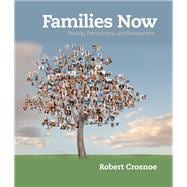Families Now: Diversity, Demography, and Development offers a modern, integrative approach to understanding families, reflecting the dynamic changes occurring in family life and institutions in the United States, while also accounting for the social and economic history that has compelled these changes.
With decades of experience researching the way families live, no one is better positioned to write about 21st century family life than Robert Crosnoe. Crosnoe’s Families Now examines families today by exploring three essential themes: 1) The diversity of family life, 2) How integral family is to healthy people and a healthy society, and 3) How family is constantly evolving. Backed by cutting-edge data and a variety of pedagogical tools, this thematic approach is an effective new way to help students get a deeper understanding of families—and as importantly, a deeper understanding of themselves.









